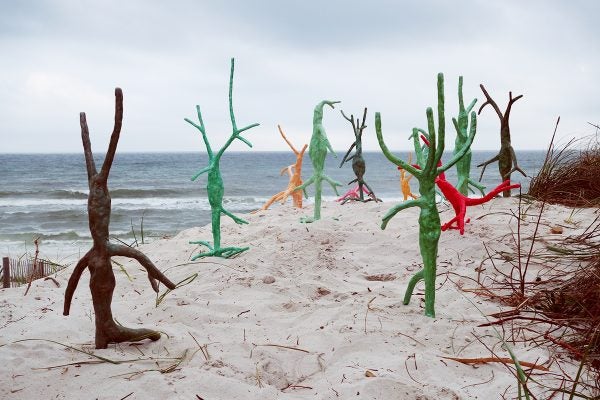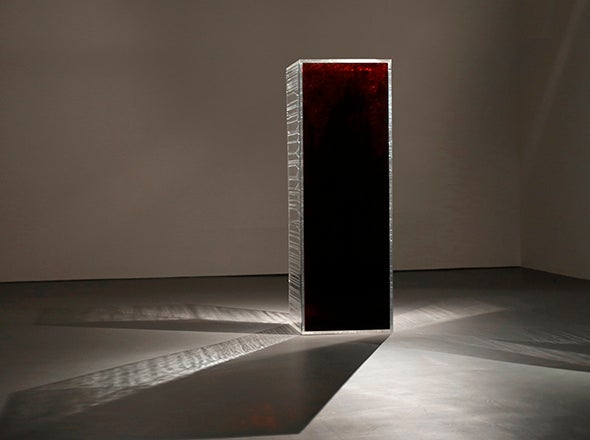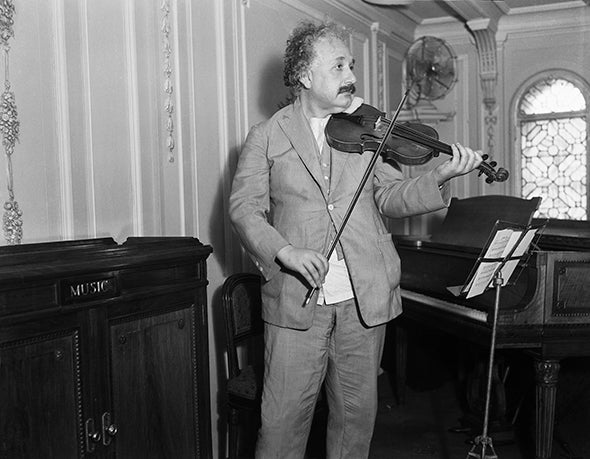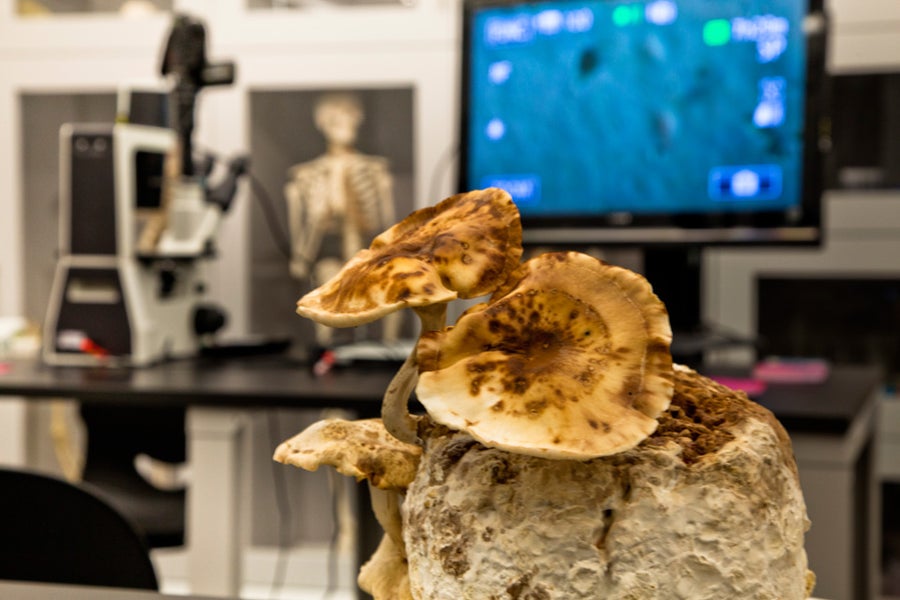This article was published in Scientific American’s former blog network and reflects the views of the author, not necessarily those of Scientific American
Last month I had the pleasure of attending two separate conferences focused on the intersection of art and science. I had co-organized one of the events, a one-day affair called SciVizNYC, which featured 15 speakers working in various fields involving science visualization. After listening to this diverse series of professionals, including medical illustrators, journalists, fine artists and academics, I headed off to a weekend-long conference called Art & Science: The Two Cultures Converging. As I climbed the steps of the venue, still buzzing with inspiration from SciVizNYC, I wondered what more could be said on a theme I felt I had just explored so thoroughly.
In fact, it turned out there were volumes more to be said. In 12 hours of discussion over three days, surprisingly little of the Art & Science conference felt redundant or even similar to the material covered at SciVizNYC. The distinction arose in part from the format of the event: rather than a series of speakers expounding individually, the conference featured several roundtable discussions, each focused on one of three themes: “Science-Art Collaboration;” “STEAM and the Future of Education” (STEAM being STEM + Art); and “Science, Art and Society.” Moreover, the event felt tonally very different from any other conference I had attended. The discussion often veered into abstract, philosophical, even existential territory, leaving me at once enlightened and a little disoriented.
I am used to thinking of the intersection of art and science in fairly concrete terms. In my work as a graphics editor for Scientific American, art is essentially a tool for communicating science. And much of the science-themed fine art I have seen appears to do something similar, if less tangibly. The neuron-like sculptures of Judith Modrak, for example, are inspired by advances in neuropsychology and read as visual contemplations of this mysterious field of science and its connection to our humanity. Without conveying a clear academic message, Modrak’s work certainly seems to celebrate science and invites viewers to consider how the physical structures of the brain translate into who they are.
On supporting science journalism
If you're enjoying this article, consider supporting our award-winning journalism by subscribing. By purchasing a subscription you are helping to ensure the future of impactful stories about the discoveries and ideas shaping our world today.

Thought Storm, created at E2C, 2017, Judith Modrak. Credit: Image courtesy of the artist
But, as some of the roundtable participants pointed out, art can have other roles with respect to science. As it does with virtually every aspect of society, art can serve as a critic. It can point out science’s shortcomings, or even parody it. And in the face of ethically dubious research practices or the global threat of nuclear technology, art can hold up a mirror and act as a moral compass. The work of visual artist Jordan Eagles provides one example of art in this role: his project Blood Mirror challenges the Food and Drug Administration’s policies regarding blood donation by gay and bisexual men.

Blood Mirror sculpture by Jordan Eagles. Credit: Leo Herrera (photo)
Additionally, practicing an art can enrich scientific thought. The example of Einstein’s dedication to the violin was cited several times at the conference, as was the exquisite draftsmanship of the neuroscientist Santiago Ramón y Cajal. In both cases, the scientists’ artistic practice made them better scientific thinkers and observers—and in Cajal’s case, doubled as a tool for communicating his findings.

Albert Einstein playing his violin, 1932. Credit: Getty Images
The Art & Science event also stretched my thinking with respect to different modes of artistic expression. Being a visual artist myself, I reflexively tend to think of art within a gallery setting—paintings, sculptures, installations, and other (usually) static, permanent or semi-permanent media types. But this conception of art leaves out dance, for example, which has yielded fascinating expressions of scientific ideas—such as Elizabeth Streb’s amazing, acrobatic explorations of Newtonian physics. Roundtable participants also made several references to film, including Al Gore’s An Inconvenient Truth, and large-scale public installations such as Agnes Denes’ 1982 ecological artwork Wheatfield: A Confrontation. Such works can exert a substantial impact on their audience in part by rejecting the gallery setting in favor of a less aloof, more socially prevalent backdrop.
Looking toward more practice-oriented issues, conference participants discussed challenging the typical hierarchy of roles in science-art collaboration. In such interdisciplinary endeavors, it is easy to view one field as functioning in service of the other. In my role, for example, there is a necessary hierarchy: I create images that communicate science, and while I do enjoy some artistic freedom, the relevant scientific information, above all else, drives the development of each graphic. Yet, this relationship can also exist in reverse. At the School of Visual Art’s Bio Art Lab, for instance, science serves art—or, more precisely, science becomes a medium for creating art. As students sculpt with mushrooms or paint with bacteria, the line between artist and scientist begins to disappear.

Bio Art Lab at the School of Visual Arts, 2012. Credit: Raul Valverde
At one point during the conference, the discussion leader pointed out that the vast majority of science-art collaborations are initiated by artists. Another participant commented that “artists are not great collaborators” because they don’t want to take instruction. For many artists, I suspect this is true—an artist’s work usually originates from whatever inspires her personally, so for a scientist (or anyone, for that matter) to instigate a collaborative project may prove fruitless.
However, as an artist who has always preferred structured assignments over open-ended ones, I would challenge this notion. I love taking instruction! And in my experience, most people who go into scientific or medical visualization are similarly oriented as artists. We are not necessarily driven by a need to express our own emotions or experiences, or to make statements through our art. Instead, we simply want to draw. Give us something to draw, and we will represent it skillfully, relishing the whole meticulous process. My field of work not only validates this preference, but the “something” I get to draw is invariably fascinating in both substance and form. Moreover, my work serves a concrete purpose—to convey scientific information—which strengthens and sustains my motivation.
This idea may get to the heart of why the Art & Science conference differed so sharply from SciVizNYC, despite appearing so closely aligned thematically. Scientific visualization is just one specific type of science-art collaboration. And while it is crucially important, its reach is limited. Other permutations of the intersection of art and science are incredibly diverse and abundant, and as both fields evolve, surely so will the connections between them.
Recorded discussions from the Art & Science conference are available here. Those in the New York City area can also check out other events from the SciArt Center, which aims to “stimulate and cultivate the growth of partnerships between the arts and sciences on the local scale.”